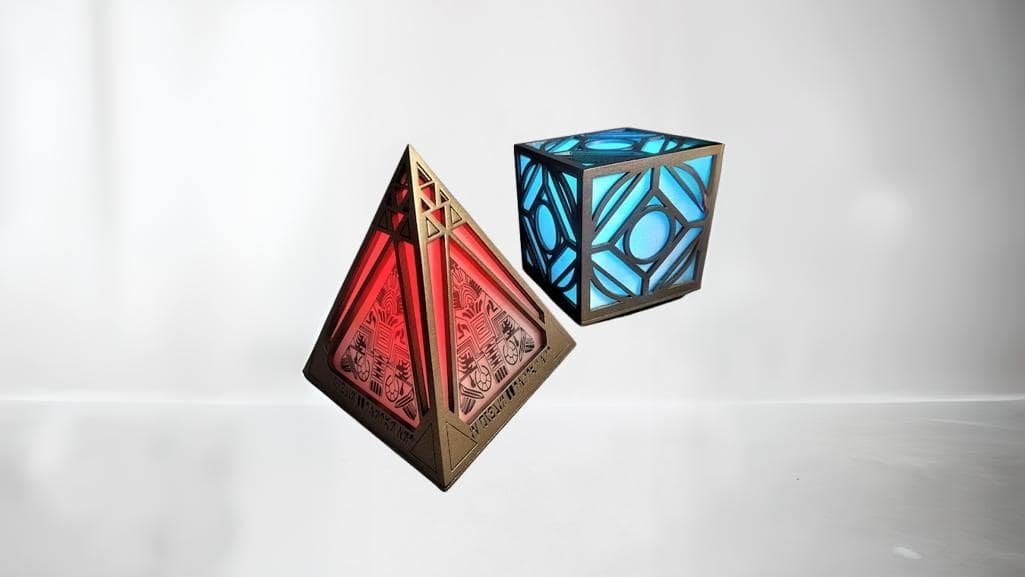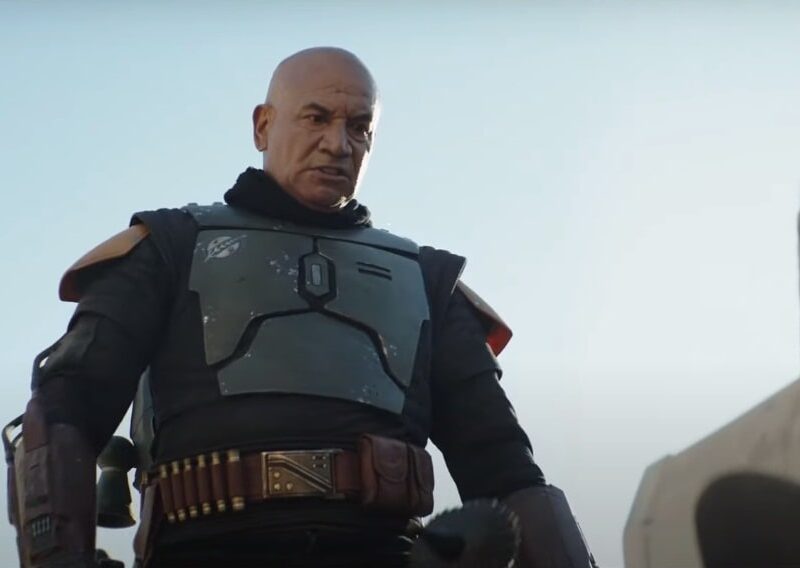1. What Is a Holocron?
A holocron was an information-storage device utilized by both the Jedi Order and the Sith, containing ancient knowledge or valuable data in holographic form. This glowing, palm-sized polyhedron, made from crystalline material and hardware, could only be activated and accessed by those attuned to the Force.
2. What Are the Defining Characteristics of Holocrons?
Holocrons were small, palm-sized information-storage devices, often designed as symmetrical polyhedrons with crystalline facets. Some featured transparent outer shells, revealing internal mechanisms, and emitted a glow when activated.
Holocrons served as repositories of critical and sensitive knowledge regarding the Force. The stored data was typically presented through an interactive hologram that resembled the individual who recorded it. Due to the sensitive nature of their contents, many holocrons were equipped with security measures that restricted access to those deeply attuned to the Force.
In some cases, activation required the use of a specific memory crystal. When properly opened using the Force, the holocron’s mechanical parts would shift to reveal its data. Each component was imbued with the power of the Force and could retain functionality even when separated from the holocron, such as remotely interacting with other holocrons or locating Force-sensitive individuals.
If a Jedi and Sith holocron were opened simultaneously by a lightsider and darksider, they would fuse, providing the users with answers to any question they posed. However, such holocron fusions were exceedingly rare due to the unlikelihood of cooperation between a lightsider and darksider. By the time of the Galactic Civil War, knowledge of this practice had largely been lost.
3. What Are the Types of Holocrons?
Holocrons come in two main types: Jedi holocrons and Sith holocrons.
3.1 Jedi holocron
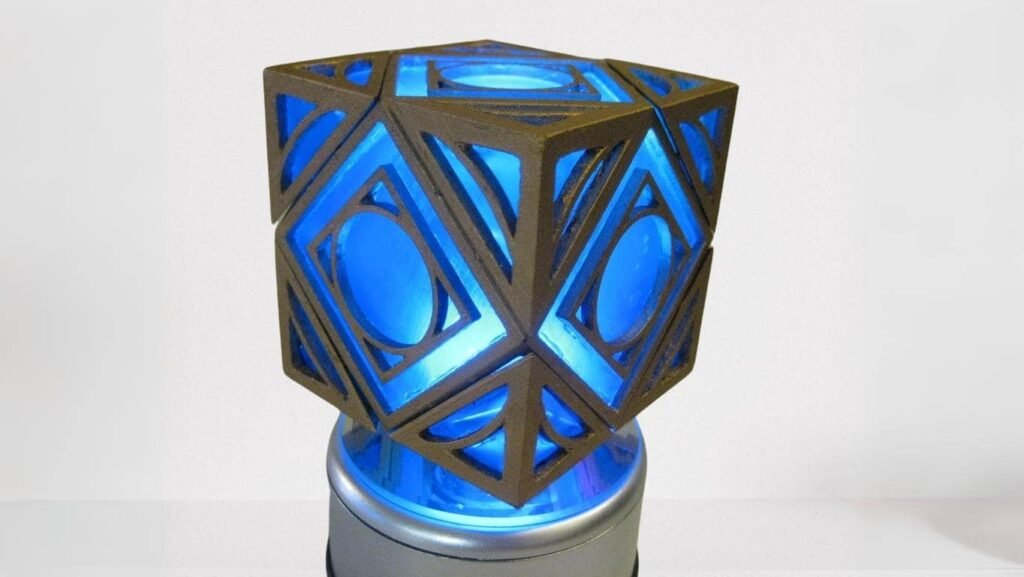
Jedi holocrons were specialized artifacts designed to preserve the knowledge and teachings of the Jedi Order.
They were equipped with security measures that only allowed Force-sensitive individuals to access the information stored within.
3.2 Sith Holocron

Sith holocrons were devices utilized by the Sith to store and protect valuable information. While their function was similar to Jedi holocrons, Sith holocrons were typically pyramid-shaped or tetrahedral, in contrast to the cuboid shape of Jedi holocrons. These dark artifacts could only be accessed by those who could wield the dark side of the Force.
The Jedi Order regarded Sith holocrons as some of the most dangerous artifacts in the galaxy. During the early rebellion against the Galactic Empire, Ezra Bridger discovered a Sith holocron within the Sith temple on Malachor and kept it after the events that transpired there.
4. Why is creating a Holocron so difficult?
The creation of holocrons was an extremely complex and challenging process. During the era of the old Sith Empire, holocrons were as common among the Dark Lords as Jedi holocrons were among the Jedi Masters.
Crafting a holocron required the gathering of rare materials and extensive meditation on the will of the dark side to channel the Sith Lord’s power. By the era of the Great Jedi Purge, almost all records detailing the creation of holocrons were believed to be lost. However, in the centuries before, this knowledge was still accessible to those determined enough to seek it. One such individual was Darth Bane.
Despite years of failed attempts to store his essence within a holocron, Bane was spurred into action when his apprentice revealed the possibility of discovering these secrets on Tython. On Tython, Bane acquired the holocron of an ancient Dark Lord of the Sith, the Shi’ido shapeshifter Belia Darzu. Darzu, an expert in holocron construction, recorded detailed instructions within her own holocron, explaining the intricate steps necessary to create a pyramidal Sith holocron.
5. Why Are Rare Crystals Essential in Holocron Creation?
As Belia Darzu, in her Shi’ido form, described, the process could take months to perfect, although some holocrons might be completed within a few weeks. Each holocron was unique to its creator; the process could not be replicated by simply following another’s blueprint. The internal components consisted of intertwined filaments and strands that formed a crystal matrix, which had to be finely tuned to avoid device failure.
Rare crystals played an essential role in the complex network capable of storing vast amounts of data. Crafting each holocron matrix demanded exact specifications, often requiring thousands of subatomic adjustments. Only with the aid of the Force could the creator achieve the flawless alignment of each crystalline strand.
6. What Is the Difference Between a Holocron and a Wayfinder?
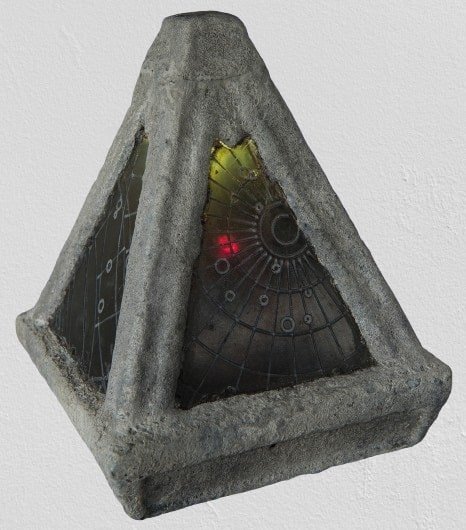
The key difference between a Holocron and a Wayfinder lies in their purpose and function. A Holocron is like a repository of knowledge, akin to a book. It contains teachings, lessons, and valuable information, particularly related to the Force, which can be accessed by those attuned to it. Holocrons are often used by both Jedi and Sith to preserve wisdom or secret knowledge.
On the other hand, a Wayfinder functions more like a compass or map. Its primary purpose is to guide its user to specific locations by storing navigational data. In The Rise of Skywalker, for example, the Sith Wayfinder helps locate the hidden planet Exegol.
While both objects store information, the Holocron is focused on knowledge and wisdom, while the Wayfinder is designed for navigation and guidance.
7. Examples of Holocrons
7.1 The Great Holocron

The Great Holocron was a Jedi holocron shaped as a pentagonal dodecahedron, composed of twelve regular pentagonal faces. Its transparent crystal facets showcased intricate inner mechanisms, held together by delicate electrum frames.
Housed within the Jedi Archives on Coruscant, it served as a cornerstone of the Jedi Temple’s library collection. Containing an immense repository of knowledge, it could only be accessed by a Jedi Master who activated it, though Jedi trainees were often encouraged to engage with its contents. Despite its accessibility, fully comprehending its vast wisdom was deemed impossible—Archivist Jocasta Nu believed even Master Yoda grappled with its complexities.
The Great Holocron was engineered to reveal knowledge aligned with the user’s readiness. When Padawans consulted it, the Archives Director closely monitored their progress, prepared to intervene if the young Jedi delved too deeply.
The Great Holocron was lost after the rise of the Galactic Empire, likely seized by the 501st Legion during their attack on the Jedi Temple during Order 66.
Decades later, in 40 ABY, the New Jedi Order rediscovered the artifact and placed it in the library of the Ossus Academy under the stewardship of Master Tionne Solusar. Though she questioned whether it was the genuine Great Holocron or a masterful replica, she continued the legacy of past archivists by updating its data with insights from more recent times.
7.2 The Holocron of Darth Andeddu

A Sith holocron, created by the ancient Sith Lord Darth Andeddu, was recovered during the Clone Wars in a contest between Quinlan Vos and Tol Skorr for Count Dooku, with Vos temporarily allied to Dooku.
This holocron contained extensive dark side knowledge and had a red lightsaber crystal embedded in its core, which powered Darth Andeddu’s Sith lightsaber. Dooku, also known as Tyranus, kept the holocron, while the red crystal was briefly used in Quinlan Vos’s lightsaber.
7.3 Darth Krayt’s Holocron
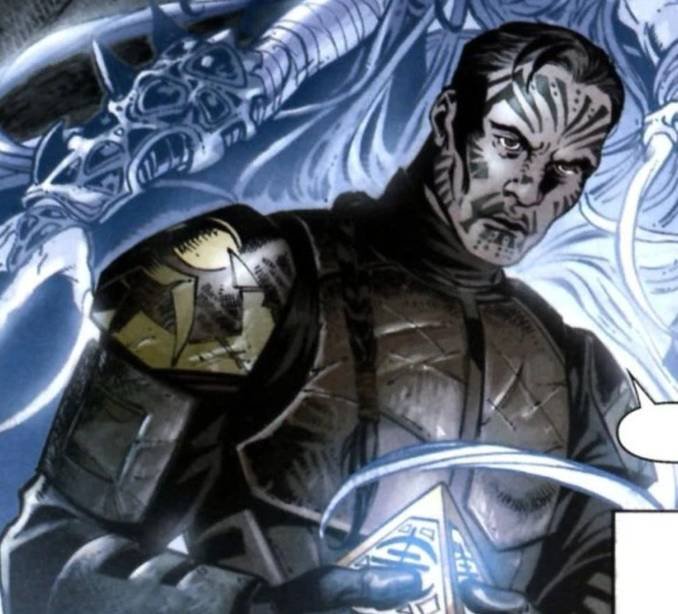
By 130 ABY, the Sith Lord Darth Krayt possessed the holocrons of past Sith Lords Bane, Nihilus, and Andeddu, and had even created his own.
In his holocron, Krayt recorded how he orchestrated the downfall of the Galactic Alliance and reestablished the Empire as the dominant galactic power.
Before founding the New Sith Order, Krayt, previously known as A’Sharad Hett, discovered the holocron of XoXaan, one of the earliest Sith Lords.
7.4 The Holocron of Malachor
Millennia before the Battle of Yavin, a Sith temple was erected on Malachor, accompanied by a Sith holocron capable of powering the structure. This temple served as an ancient superweapon, but the Jedi eventually discovered it and launched an assault.
During the ensuing battle, the temple was activated, petrifying everything in its vicinity and forming a massive dome over the site. Prior to this, the Sith had concealed their knowledge within the holocron, which was stored in a chamber beneath the temple, accessible only through the dark side of the Force, likely to prevent the Jedi from obtaining it. According to Sith teachings, the doors to the chamber required two Force-users to open.
In the era of the Galactic Empire, Master Yoda informed Padawan Ezra Bridger of Malachor’s existence. Ezra, along with Ahsoka Tano, Kanan Jarrus, and their droid Chopper, traveled to the planet. Upon arrival, it became clear that the Empire’s Inquisitors were also interested in Malachor’s secrets, as was the former Sith Lord, Maul, who had been stranded on the planet for years.
After being separated from his friends, Ezra encountered Maul, and the two joined forces to retrieve the hidden holocron from the heart of the Sith temple. However, they soon encountered the Inquisitors and rejoined Ahsoka and Kanan.
Together, they managed to defeat the Inquisitors, but Maul then revealed his true intentions: to activate the temple, take Ezra as his apprentice, and destroy all his enemies. However, Kanan, despite being blinded by Maul’s lightsaber moments earlier, was able to defeat Maul. Maul survived the encounter and escaped Malachor by stealing one of the Inquisitors’ TIE Advanced prototype fighters.

On the temple, as Ezra placed the holocron within an obelisk at its summit, he was greeted by a mysterious female voice who informed him that the temple was actually a superweapon.
Realizing that Maul had deceived them, Ezra attempted to warn Ahsoka and Kanan, but at that moment, the Sith Lord Darth Vader descended from above in his TIE Advanced.
Surprised, Vader questioned how Ezra had managed to activate the temple but dismissed him, stating that all that mattered was that the power within would soon serve the Emperor.
After breaking Ezra Bridger’s lightsaber and preparing to execute him, Vader was interrupted by his former Padawan, Ahsoka. The two engaged in a fierce duel while Ezra attempted to retrieve the holocron from the temple, only to discover he needed help. Kanan, though blinded, found Ezra, and together they successfully retrieved the holocron.
However, this caused the temple to begin collapsing. As they made their way back to the Phantom, they were intercepted by Vader. Ahsoka intervened, charging at Vader from behind and slicing his mask. While she held off Vader, Kanan and Ezra escaped to the Phantom, just as the temple collapsed over the dueling opponents.
As the Phantom flew away from Malachor, a large energy burst erupted from the collapsing temple. Now in Ezra’s possession, the holocron was unlocked using the dark side of the Force.
Over the following months, the holocron gradually corrupted Ezra Bridger, drawing him toward the dark side and increasing his power against the Galactic Empire.
Concerned about the holocron’s influence, Kanan Jarrus, who had been blinded by Maul, took it away from Ezra. He later entrusted it to Bendu, a Force-sensitive being who claimed to represent the center of the Force, offering it as a “gift” after Bendu helped him see using the Force despite his physical blindness.
Some time later, Maul captured the crew of the Ghost and held them hostage, demanding that Ezra and Kanan return the Sith holocron to him. After retrieving the holocron from Bendu on Atollon, the two Jedi met Maul at an outpost. While Ezra went with Maul’s droids to check on his friends, Kanan accompanied Maul, who then attempted to kill him by ejecting him into space through an airlock.
Believing Kanan to be dead, Maul told Ezra that by combining the Sith holocron with Kanan’s Jedi holocron, they could gain the knowledge they sought. Ezra wanted to learn how to destroy the Sith, while Maul claimed he was searching for hope. As they opened both holocrons together, they glimpsed a planet’s stars and the survival of “him.” Before they could learn more, Kanan, who had survived, intervened and stopped the process, causing both holocrons to fragment.
8. How Have Holocrons Influenced Star Wars Merchandise and Fan Culture?
Holocrons have influenced Star Wars merchandise and fan culture through collectibles, interactive experiences, video games, and fan creations.
8.1 Collectibles and Replicas
- Replica Holocrons: High-quality replicas available for fans to own, often used as display pieces or interactive props.
- 3D Models and LEGO Sets: Holocron-themed sets allow fans to build and interact with their own versions of these artifacts.
8.2 Interactive Merchandise
- Digital Holocrons: Apps and digital platforms offer interactive holocron experiences, where users can unlock content and engage with holographic teachings.
- Augmented Reality (AR) Holocrons: AR-enabled holocrons that project holograms when viewed through compatible devices, enhancing the immersive experience.
8.3 Holocrons in Games and Media
- Video Games: Holocrons feature prominently in games like Star Wars: Knights of the Old Republic and Star Wars: The Old Republic, serving as key elements for quests and lore exploration.
- Books and Comics: many publications explore holocron lore, expanding their narrative role and providing deeper context within the Star Wars universe.
8.4 Influence on Fan Creations
- Fan Art and Cosplay: Holocrons inspire a wide range of fan art, cosplay accessories, and custom creations, celebrating their iconic design and significance.
- Fan Theories and Discussions: Holocrons are frequent subjects of fan theories and discussions, exploring their origins, functions, and potential future roles in the Star Wars saga.
Explore Our Lightsaber Collection
Tony Allen is a writer for LightsabersBlog.com, a website focused on everything related to lightsabers. Tony grew up in Austin, Texas, and went on to study Mechanical Engineering at the University of Texas. Passionate about science fiction and fantasy, Tony has always been deeply involved in hobbies like tabletop RPGs, sci-fi novels, miniature painting, and crafting. This love for creative pursuits drives Tony to write about lightsabers in a way that ignites the imagination of fans around the world.

